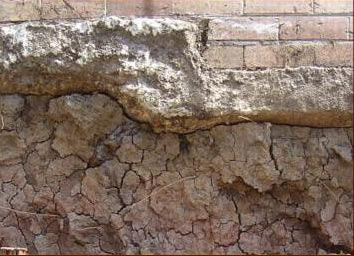Foundation Design Options for Residential and Other Low-Rise Buildings on Expansive Soils
Credit: 7 PDH Hours
Course Fee: $105.00
41 pages
How it Work!
- Register first and log into your account. Study and take the quiz for FREE until passed.
- After passing the quiz, follow the page, pay for the course and print your certificate.
Course Summary:

A brief overview of the design problems associated with expansive soils is provided in Section 2.0, and general design considerations are presented in Section 3.0. The foundation design options are categorized into three separate sections. Section 4.0 covers foundation system design options considering the structural foundation system as a whole. The foundation systems are subdivided into two groups: deep support systems and shallow support systems. Section 5.0 addresses design options for various individual structural components of the foundation systems that are discussed in Section 4.0. Section 6.0 discusses site design options for moisture and vegetation control systems.
Foundation design options for heavily loaded structures such as mid- to high-rise buildings or large industrial structures that usually require deep foundations or thick large mat foundations are not addressed, nor are design options for lightly loaded structures that are not susceptible to significant damage due to differential vertical movements from soil moisture changes, such as relatively flexible light gage metal buildings with exterior metal siding and roofing and wide open interior spaces with no interior partition walls.
Learning Objective:
The challenge with designing building foundations on moderate to highly expansive clay soils is the potential detrimental effects of differential movements of the foundation structural elements due to volumetric changes of the underlying and surrounding soils. In simple terms, expansive clay soils swell and can cause heave with increasing soil moisture or can dry out and cause subsidence with decreasing soil moisture.
Movement of expansive soils is caused by fluctuations in the moisture content of soil particles. Because homogeneous expansive clay soils have very low permeability, fluctuations in the moisture content of the soils might normally be expected to occur over a very long period. However, permeability is increased with geotechnical phenomena such as ground faults, surface fractures due to desiccation of clays, and decomposition of tree roots which cause fissures and cracks that become widely disseminated over time.
Due to the repeated wetting, swelling, drying, and shrinking of the clay as it weathers, the fissures often fill with silt and sand, and create pathways for water that can exacerbate the infiltration process. Water can also easily move through naturally occurring sand strata, sand seams, and micro-cracks in clay soil caused by previous shrinkage. High negative pressures, also known as suction, in clay soils with low water content also increase the tendency for water to be absorbed into the clay.
Environmental factors other than climatic conditions can also affect expansive soils. Water extraction by trees and other vegetation, a process known as transpiration, can cause soil shrinkage. Swelling can be a result of water infiltration into the soil from lawn irrigation systems, broken water pipes, flooded and leaking utility trenches, poor drainage, or leaking swimming pools, or it can be a result of slow moisture replenishment and equalization after the removal of a tree. The combined effect and variability of all of these possibilities make it difficult to accurately predict expansive soil ground movements.
Foundation movements are considered problematic only if they result in negative phenomena that detrimentally affect the performance or appearance of the building. The negative phenomena are considered to be structural if the load carrying capacity of the superstructure or foundation elements are affected or are considered to be cosmetic if only the appearance of the exterior cladding or interior wall, floor, or ceiling finishes are affected. Negative phenomena can also affect the serviceability the building, such as the opening or closing of doors.
Negative phenomena due to foundation movement typically occur because of differential movements between various parts of the building. Differential movements often lead to high internal stresses in building components resulting as distress in the form of cracks, splitting, bending, buckling, or separations in the exterior cladding systems such as brick, cement-board panels, or in the interior finishes such as gypsum drywall panels, wood paneling, and flooring.
Review the quiz before studying the course.
Course Content
Course Author: APF
Certificate of completion of the course
This course comes with a multiple-choice quiz. You can view the quiz and take the quiz if you are logged in your account. You can take the quiz for this online PDH course as many times until passed. The passing grade is 70% and above. After you pass the quiz simply follow the page, to pay for the course and print your certificate instantly. A copy of the certificate and receipt for this course will always be in your account.
This online PDH course can also be used as a continuing education course for the following.
